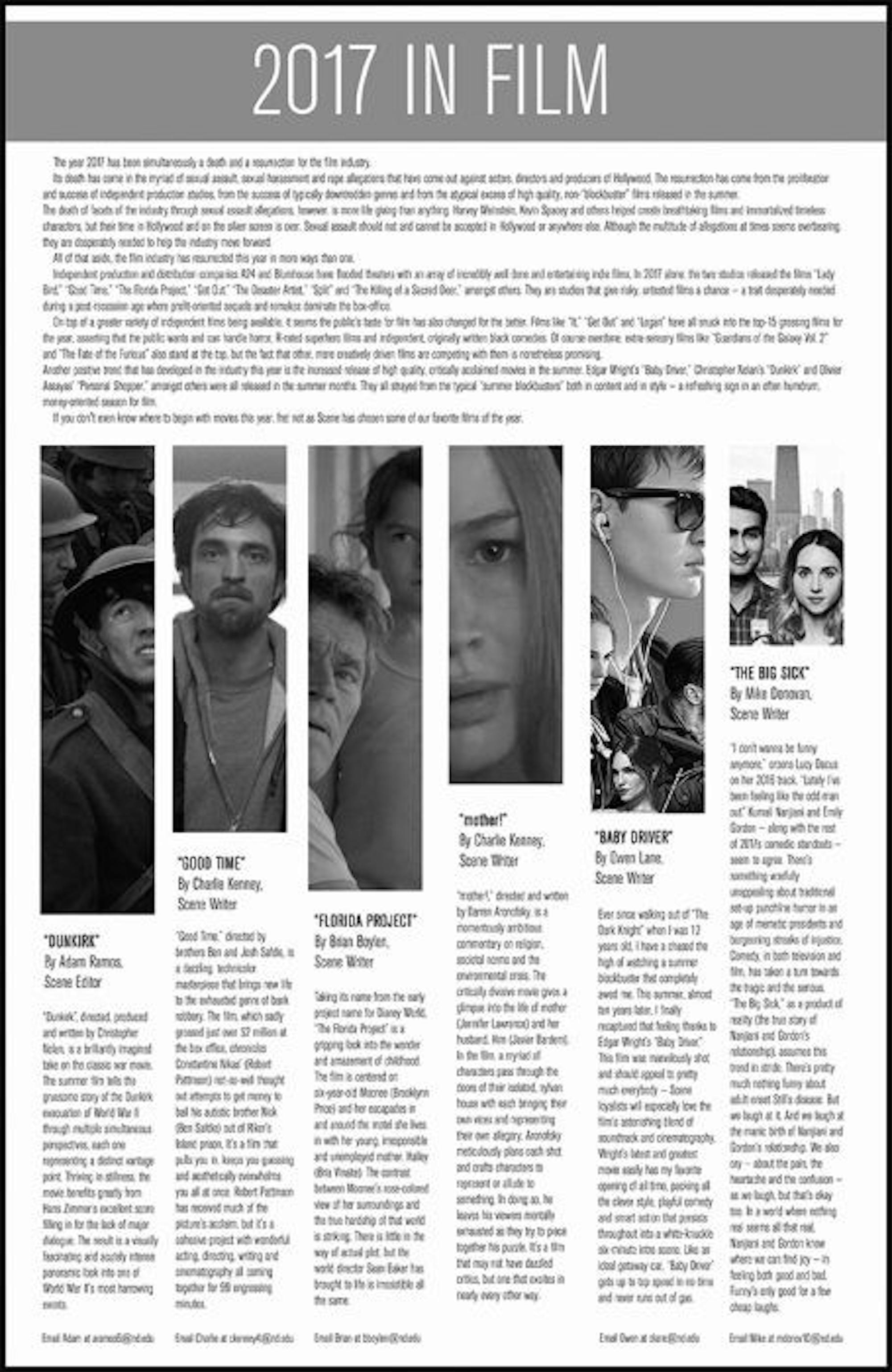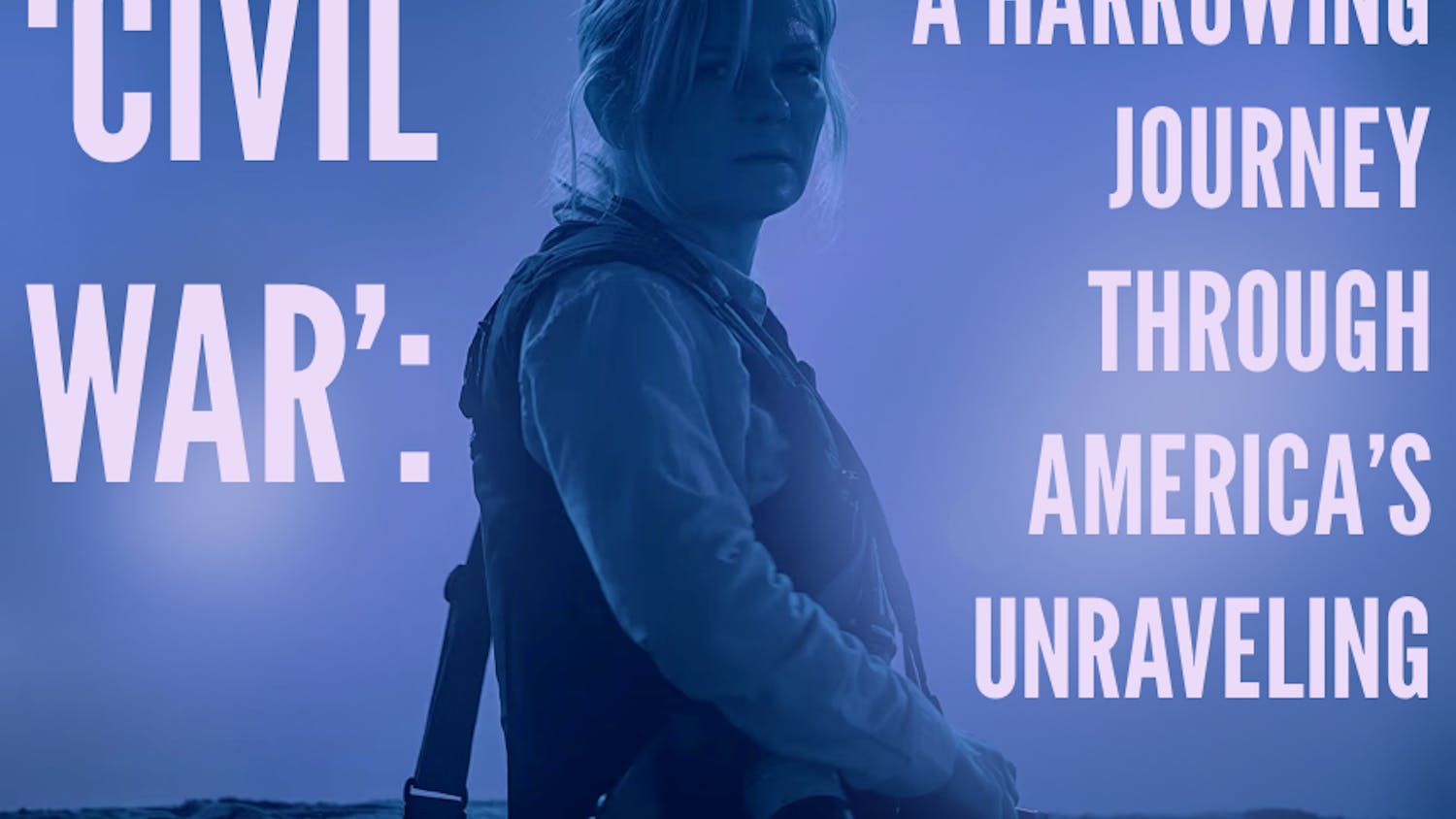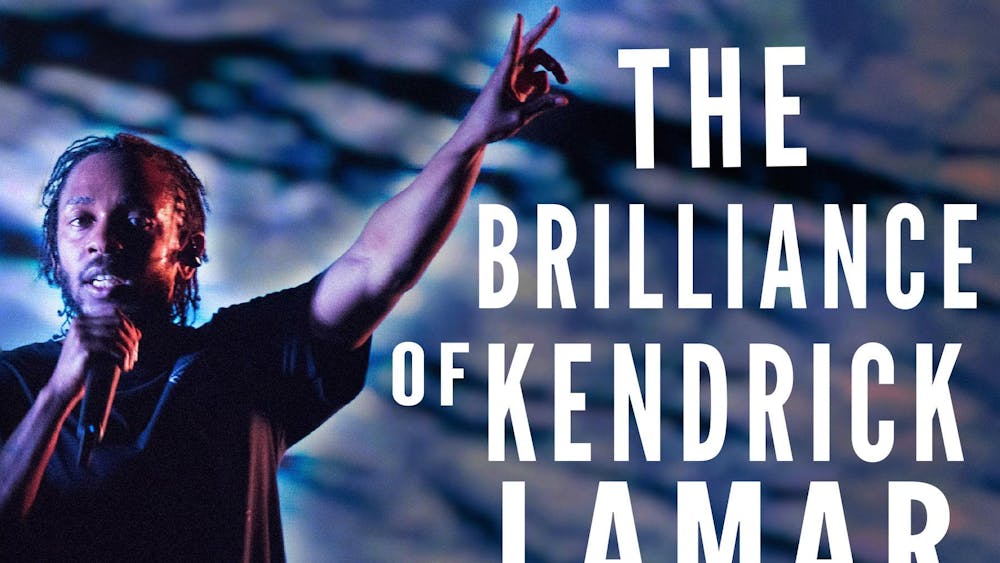
The year 2017 has been simultaneously a death and a resurrection for the film industry.
Its death has come in the myriad of sexual assault, sexual harassment and rape allegations that have come out against actors, directors and producers of Hollywood. The resurrection has come from the proliferation and success of independent production studios, from the success of typically downtrodden genres and from the atypical excess of high quality, non-“blockbuster” films released in the summer.
The death of facets of the industry through sexual assault allegations, however, is more life giving than anything. Harvey Weinstein, Kevin Spacey and others helped create breathtaking films and immortalized timeless characters, but their time in Hollywood and on the silver screen is over. Sexual assault should not and cannot be accepted in Hollywood or anywhere else. Although the multitude of allegations at times seems overbearing, they are desperately needed to help the industry move forward.
All of that aside, the film industry has resurrected this year in more ways than one.
Independent production and distribution companies A24 and Blumhouse have flooded theaters with an array of incredibly well done and entertaining indie films. In 2017 alone, the two studios released the films “Lady Bird,” “Good Time,” “The Florida Project,” “Get Out,” “The Disaster Artist,” “Split” and “The Killing of a Sacred Deer,” amongst others. They are studios that give risky, untested films a chance — a trait desperately needed during a post-recession age where profit-oriented sequels and remakes dominate the box-office.
On top of a greater variety of independent films being available, it seems the public’s taste for film has also changed for the better. Films like “It,” “Get Out” and “Logan” have all snuck into the top-15 grossing films for the year, asserting that the public wants and can handle horror, R-rated superhero films and independent, originally written black comedies. Of course overdone, extra-sensory films like “Guardians of the Galaxy Vol. 2” and “The Fate of the Furious” also stand at the top, but the fact that other, more creatively driven films are competing with them is nonetheless promising.
Another positive trend that has developed in the industry this year is the increased release of high quality, critically acclaimed movies in the summer. Edgar Wright’s “Baby Driver,” Christopher Nolan’s “Dunkirk” and Olivier Assayas’ “Personal Shopper,” amongst others were all released in the summer months. They all strayed from the typical “summer blockbusters” both in content and in style — a refreshing sign in an often humdrum, money-oriented season for film.
If you don't even know where to begin with movies this year, fret not as Scene has chosen some of our favorite films of the year.
“Dunkirk”
By Adam Ramos, Scene Editor
“Dunkirk”, directed, produced and written by Christopher Nolan, is a brilliantly imagined take on the classic war movie. The summer film tells the gruesome story of the Dunkirk evacuation of World War II through multiple simultaneous perspectives, each one representing a distinct vantage point. Thriving in stillness, the movie benefits greatly from Hans Zimmer’s excellent score filling in for the lack of major dialogue. The result is a visually fascinating and acutely intense panoramic look into one of World War II’s most harrowing events.
“Good Time”
By Charlie Kenney, Scene Writer
“Good Time,” directed by brothers Ben and Josh Safdie, is a dazzling, technicolor masterpiece that brings new life to the exhausted genre of bank robbery. The film, which sadly grossed just over $2 million at the box office, chronicles Constantine Nikas’ (Robert Pattinson) not-so-well thought out attempts to get money to bail his autistic brother Nick (Ben Safdie) out of Riker’s Island prison. It’s a film that pulls you in, keeps you guessing and aesthetically overwhelms you all at once. Robert Pattinson has received much of the picture’s acclaim, but it’s a cohesive project with wonderful acting, directing, writing and cinematography all coming together for 99 engrossing minutes.
“Get Out”
By Adam Ramos, Scene Editor
Seamlessly melding elements of comedy, horror and biting social commentary into a thrilling 104-minute masterwork, “Get Out” is an extremely high mark for the directorial debut of longtime comedy veteran Jordan Peele. The film, which enjoyed a 630 percent return on its $4.5 million budget, capitalized on the year’s intense political climate through its unmatched treatment of nuanced race issues — helping make it one of the most important movies of the year.
“Florida Project”
By Brian Boylen, Scene Writer
Taking its name from the early project name for Disney World, “The Florida Project” is a gripping look into the wonder and amazement of childhood. The film is centered on six-year-old Moonee (Brooklynn Price) and her escapades in and around the motel she lives in with her young, irresponsible and unemployed mother, Halley (Bria Vinaite). The contrast between Moonee’s rose-colored view of her surroundings and the true hardship of that world is striking. There is little in the way of actual plot, but the world director Sean Baker has brought to life is irresistible all the same.
“mother!”
By Charlie Kenney, Scene Writer
“mother!,” directed and written by Darren Aronofsky, is a momentously ambitious commentary on religion, societal norms and the environmental crisis. The critically divisive movie gives a glimpse into the life of mother (Jennifer Lawrence) and her husband, Him (Javier Bardem). In the film, a myriad of characters pass through the doors of their isolated, sylvan house with each bringing their own vices and representing their own allegory. Aronofsky meticulously plans each shot and crafts characters to represent or allude to something. In doing so, he leaves his viewers mentally exhausted as they try to piece together his puzzle. It’s a film that may not have dazzled critics, but one that excites in nearly every other way.
“Baby Driver”
By Owen Lane, Scene Writer
Ever since walking out of “The Dark Knight” when I was 12 years old, I have a chased the high of watching a summer blockbuster that completely awed me. This summer, almost ten years later, I finally recaptured that feeling thanks to Edgar Wright’s “Baby Driver.” This film was marvelously shot and should appeal to pretty much everybody — Scene loyalists will especially love the film’s astonishing blend of soundtrack and cinematography. Wright’s latest and greatest movie easily has my favorite opening of all time, packing all the clever style, playful comedy and smart action that persists throughout into a white-knuckle six-minute intro scene. Like an ideal getaway car, “Baby Driver” gets up to top speed in no time and never runs out of gas.
“Lady Bird”
By Brian Boylen, Scene Writer
“Lady Bird” is the directorial debut of writer/actress Greta Gerwig, and quite the debut it is; “Lady Bird” managed to unseat “Toy Story 2” as the most reviewed film to maintain a perfect score on Rotten Tomatoes. This speaks to the quality of the film both as an impressively well-crafted work, and as an impeccably heartwarming story. Saoirse Ronan gives one of her best performances yet as high school senior Lady Bird, and her performance is matched by the rest of the cast. The coming-of-age story is familiar, but that’s part of the reason “Lady Bird” is so resonant.
“The Big Sick”
By Mike Donovan
“I don’t wanna be funny anymore,” croons Lucy Dacus on her 2016 track. “Lately I’ve been feeling like the odd man out.”
Kumail Nanjiani and Emily Gordon — along with the rest of 2017s comedic standouts — seem to agree. There’s something woefully unappealing about traditional set-up punchline humor in an age of memetic presidents and burgeoning streaks of injustice. Comedy, in both television and film, has taken a turn towards the tragic and the serious.
“The Big Sick,” as a product of reality (the true story of Nanjiani and Gordon’s relationship), assumes this trend in stride. There’s pretty much nothing funny about adult-onset Still’s disease. But we laugh at it. And we laugh at the manic birth of Nanjiani and Gordon’s relationship. We also cry — about the pain, the heartache and the confusion — as we laugh, but that’s okay too. In a world where nothing real seems all that real, Nanjiani and Gordon know where we can find joy — in feeling both good and bad. Funny’s only good for a few cheap laughs.













